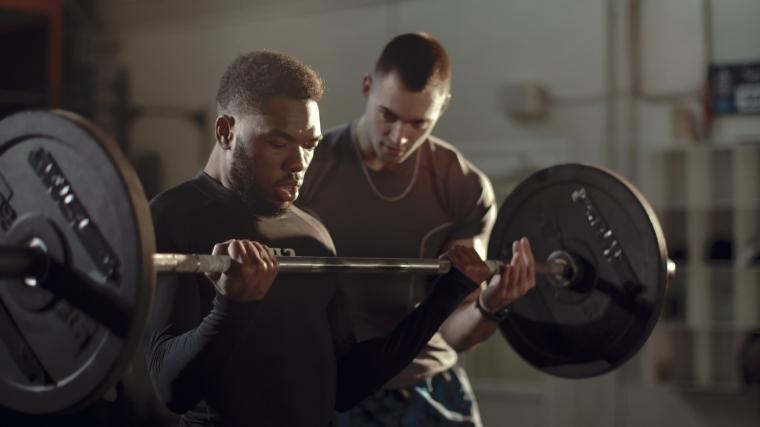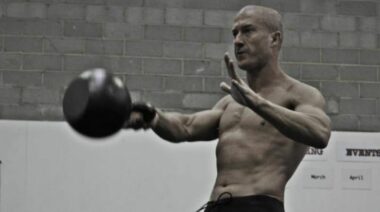Programming is an art form; there’s no doubt about it. A person who demonstrates sharp instincts, flexibility, and creativity in a finely-tuned program is a talented coach/trainer. Many of us coaches get bogged down in systems and software. Plugging exercise A here and exercise B in there can perhaps add convenience, but the art form gets lost.
The methods that worked like a charm 10 years ago are relics by today’s standards. Teaching methods and coaches are evolving, as are the cookie-cutter software programs. In many respects, the convenience of these programs is worth its weight in gold. But are we losing some of the magic when we do it this way?

My Coaching History
I can’t speak for all coaches because I don’t know what they are up against. My story is a bit of an unusual one for a college strength coach. I paid my coaching dues in a unique way. I started at Eastern Kentucky University as an intern in the spring semester of 2000. Six weeks into my internship, my Head Strength Coach, Mike Kent, took the head job at the University of Louisville and had to leave. Because of the relative newness of his position at EKU, the administration was unprepared and asked me to fill in until a search could be conducted for Coach Kent’s replacement. I worked for three months alone, trying to keep an athletic department strength program afloat.
One of the most difficult tasks while filling in for him was programming the way he programmed. Get this: Kent wrote out every individual program by hand. Each team would have either one sheet or a series of sheets that would carry that team for a month or two. He created each plan in Excel, where the exercises would be built into the framework of the sheet. Then he would spend his weekend hand-programming loads for each athlete over the scope of the entire athletic department. One red pen, followed by hours and hours of work. Kent’s meticulous programming ensured every athlete got the level of individual attention that he felt they needed.
The Difference Between Sheets and White Boards
The coach-athlete relationship is an interesting one. When it comes to compliance, athletes are mandated to show up whether they like it or not, and they don’t have a say in their programming. If you are a private trainer or own a gym/box, your clients have more say. But one thing shines clear in all settings — the people training in your space want to feel like they are being given their due attention, not just as members of a group but as individuals.
There are only a few instances where using a whiteboard is acceptable in my facility. Most of the time, we use whiteboards when we are teaching. When we are trying to get techniques dialed in and where loads are not necessarily a priority, the first month or so is a great time to rely on a whiteboard. Again, in my situation, which is very specific, we will also keep a team on the whiteboard if the team members are not showing a level of dedication. Let’s face it, nobody on campus takes weight training as seriously as I do, and there are some teams who “go through the motions.” I advise my assistants to act accordingly. There’s no need to devote hours and hours of programming for a team that will not give an acceptable effort.

Again, I understand that in a CrossFit box, most clientele can be transient and not as consistent as a college team that is required to show up. That makes the individuality piece more of a headache since you don’t know the next time your clients will show up. But nothing tells your clients you are all in with them, like handing them each a sheet with their name on it. It’s a simple gesture that speaks volumes about your commitment to their progress. Yes, it can be time-consuming, but it can also be a difference between a lackluster effort and a herculean one.
Computer Programming Vs. Hand Programming
I have never used a computer to run percentages for one of my programs. I have always done it by hand. And honestly, I have never used a set percentage to assign loads except for deciding loads for the beginning of a hypertrophy cycle based on a newly minted one-rep max. The method I use is one that Coach Kent taught me, and it’s based on that method’s natural evolution after 16 years of doing it that way.
Computer programming based on percentages, to me, makes some pretty bold assumptions for the duration of a training cycle. First off, if you use a linear method as I do, you probably write for eight to 12 weeks at a time. If I write a twelve-week hypertrophy/strength/power program for a football player, code the weeks with prescribed percentages, and then tap in a one-rep max to be our baseline for the percentages, I am asking the athletes to be perfect with their nutrition, their rest, their effort — at all times. And let’s face it, none of them are. It’s nearly impossible for a person to be that dialed-in all of the time.

Hand programming gives me several advantages that a computer will never provide. First, even though I use what looks like an algebraic formula in my head to determine loads, I get the flexibility to adjust on the fly. You need that flexibility when Joe Blow rolls his ankle the Friday prior. Hand programming gives me an out when I realize that the whole team is about to bonk, and an impromptu deload week is what is needed. It allows me (or forces me, really) to get a complete read on each individual and holds my ass to the fire to stay engaged with each of my athletes. You can ask me at any time of a training cycle what the weight on so-and-so’s bench is on his second set, and 99 out of 100 times, I will know what’s going on.
How I Program
If you were to watch me program, this is what it would look like: I have a stack of sheets, and each one gets the signature “pause and think.” I have to look at the athlete’s name and quickly review and remember what this person did last week. Then the writing begins. I will program a sheet twice a week in some training phases, once for the first half, then once for the second. It keeps me as current as possible for each individual.
When it comes to coaching, I am selling an idea. I am selling a formula. I am asking my athletes to have complete faith in me as I make decisions for them. The way I operate gives my athletes complete freedom not to think. They come in, and their job is to be focused and present and, most importantly, ready to perform. I do all the thinking for them days earlier, so they can just come in and kick ass.
Hand programming is part of that. If I hand you a sheet of computer-printed numbers, it will excite you as much as combing your hair or putting mustard on your sandwich. But when I give you a sheet with my handwriting on it, you should see someone who is partnered with you. The handwriting tells the athletes I have taken the time to think about them every day of every week.
Featured Image: Chris Holder






